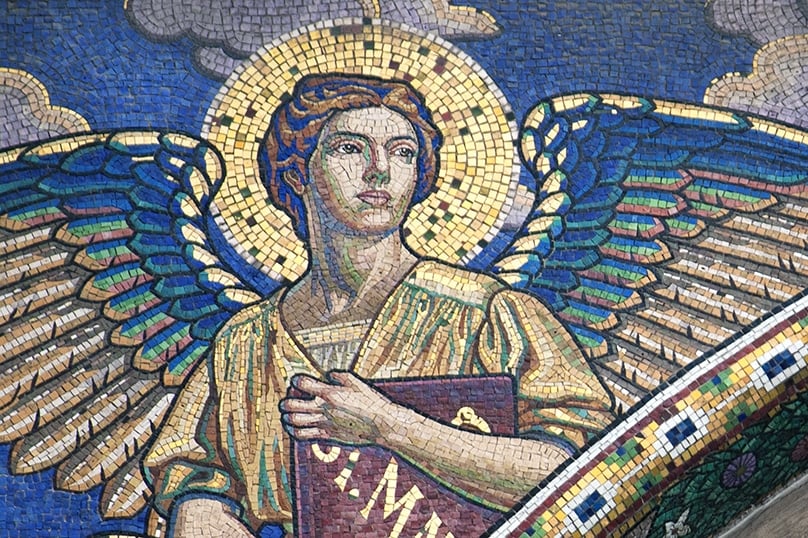
We live in an age under the chronic delusion that we are 2000 years smarter than the simple people who wrote and read the gospels. Accordingly, we often do not bother to look for the sophisticated and subtle ways in which the evangelists communicated with their disciples and we therefore miss a great deal of what is being said.
For example, most post-moderns miss the massive amount of information compressed into a gospel like Matthew’s and take it for a sort of jumble of sayings of and tales about Jesus “collected” like old rags by the evangelist and tossed out helter skelter with some quotations from the Old Testament. But in fact, Matthew’s gospel is carefully and artfully structured.
Matthew is divided into five books bracketed on either end by a prologue consisting of the infancy narrative and by an epilogue consisting of the passion narrative.
Why five? Because Matthew is writing to his fellow Jews arguing that Jesus is the Jewish Messiah and the fulfilment of the law and the prophets. The law of Moses is five books: Genesis, Exodus, Leviticus, Numbers and Deuteronomy. So Matthew emulates this with his gospel of Jesus, the New Moses.
Now each of the five books within Matthew is divided into a narrative and a discourse section. The narrative section of Book I is the story of John the Baptist and the Baptism of Jesus. The Sermon on the Mount is the discourse section of Book I. It lays out for us the new law of the new covenant. So, just as Moses went up on the mountain and laid out the old law of the old covenant, so Jesus, the new Moses, promulgates the new law of the new kingdom on a mountain as well.
Some people will notice that Luke 6:17-49 records very similar material but situates his telling not on a mountain but where Jesus “came down with them and stood on a level place” in the “Sermon on the Plain”.
For some, this raises doubts about supposed “contradictions in the gospels”, but the difficulty is easily resolved when we reflect on the fact that this material is stuff that Jesus said, not once, but zillions of times in all kinds of social settings to many different groups of people.
The wording is different and the setting is different because a) Jesus’ wording was different on different occasions just as you and I don’t say things exactly the same way every time we offer a story or talk to our kids about something.
Relatedly, the gospel writers are not giving us tape-recorded transcripts but the eyewitness accounts of the gist of what Jesus has to say. Very often, Jesus will, like a good teacher, deliver his teaching in easy to remember “data packets”: “Ask and it will be given. Seek and you will find. Knock and the door will be opened to you” is simple to remember: like the words to a song. Very likely, such sayings are Jesus’ exact words.
But on other occasions, Jesus will say similar things but with slightly different wordings, such as “Blessed are the poor” and “Blessed are the poor in spirit.” Both are true. And the evangelist, depending on his audience and purpose, will note details about location, not always to give us a geography lesson, but to make a spiritual point.
So Luke, emphasising both the universality of Jesus’ call to the whole human race and his special love of the poor, records that Jesus “came down with them and stood on a level place” while Matthew, emphasising Jesus as the new Moses, puts him on a new Sinai. Both are telling the truth about Jesus by selecting from a mass of historical material and shaping it to their purpose for the needs of their audiences.
Next time, in this space, we will look at what Matthew is up to in Book II of his gospel.
